Follow Hui Kuo Technology to learn more about technology knowledge
Hello everyone, I am Liu Zenghui!
Today we will continue the series of lectures on artificial intelligence neural networks, focusing on the transformation mechanism and practical applications of RNNs, exploring how they are widely used in various fields!
Transformation Mechanism of RNN
In the previous article, we discussed the application cases of Convolutional Neural Networks(CNN), covering the implementation processes of various tasks such as image classification and object detection. In this section, we will focus on the transformation mechanism of Recurrent Neural Networks(RNN) and understand how they handle sequential data.
Basic Principles of RNN
RNN (Recurrent Neural Network) is a neural network architecture specifically designed for processing sequential data. Unlike traditional feedforward neural networks,RNN has hidden states that can utilize information from previous time steps for dynamic state updates. This feature allowsRNN to perform exceptionally well in handling sequential data such as text, speech, and video.
In anRNN, the hidden state at a certain time stepht depends not only on the current inputxt but also on the previous hidden stateht−1. The core recursive relationship can be expressed as:

WhereWh and Wx are the weight matrices for the hidden state and the input, respectively, and f is the activation function, which can betanh or ReLU.
Transformation Mechanism of RNN
In the transformation mechanism ofRNN, the input sequence is gradually fed into the network, and after each computation, the update of the hidden state considers not only the current input information but also incorporates past information. This mechanism allowsRNN to perform “memory” and “forgetting” of information over time. However, standardRNN suffers from gradient vanishing or explosion issues when learning long sequences.
To address this flaw,Long Short-Term Memory (LSTM) and Gated Recurrent Unit (GRU) were proposed. They introduce gating mechanisms to control information storage and forgetting, effectively solving the long sequence dependency problem.
LSTM Gating Mechanism
LSTM‘s transformation mechanism utilizes a structure of three gates (input gate, forget gate, output gate) to finely adjust the flow of memory. Specifically, its core state update equations are as follows:
Forget Gate: Determines the information to discard from memory

Input Gate: Determines the information to enter memory

Output Gate: Determines the information to output from memory

Update Memory Cell State

Final Update of Memory and Hidden State

Through the above equations,LSTM can effectively handle long-distance dependencies and selectively retain information at each time step.
Application of Transformation Mechanism in Specific Cases
In practical use, the transformation mechanism ofRNN is widely applied in many fields. Below is a specific case of text generation based onLSTM.
Text Generation Example
Suppose we have a piece of text, and we want to use theLSTM model to generate new text content.
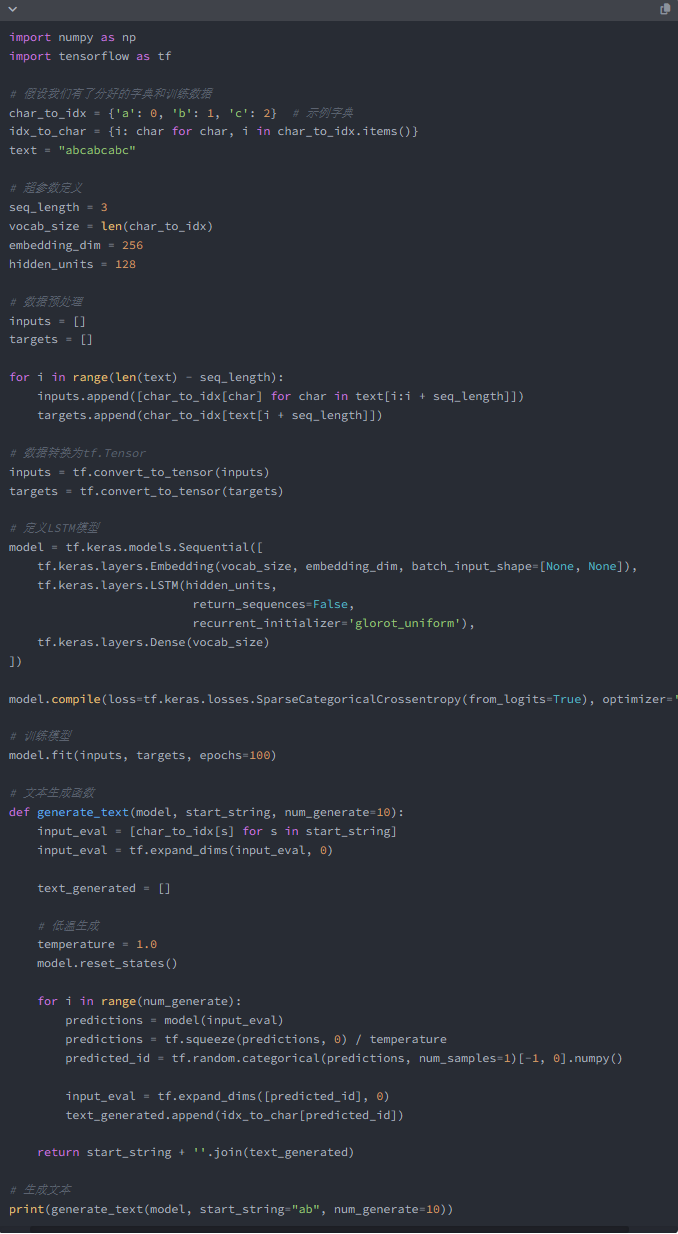
In this simple example, the transformation mechanism learned byLSTM enables the model to generate a new character sequence starting from the prefix “ab“.
RNN‘s uniqueness lies in its ability to process sequential information, allowing it to achieve good results in tasks such as sequence generation and sentiment analysis.
Practical Applications of RNN
Natural Language Processing (NLP)
RNN is most widely used in natural language processing. Since language is inherently sequential data,RNN can effectively handle the contextual relationships of text. Here are some main application cases:
1. Language Modeling
RNN can be used to build language models that predict the next most likely word given the preceding context. For example, given the text “The cat sat on the,” we can use theRNN model to predict that the next word is “mat.”
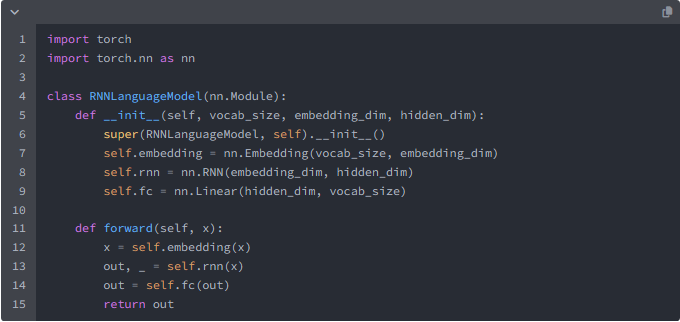
2. Machine Translation
RNN has also been very successful in machine translation. Through an encoder-decoder structure, RNN can encode sentences in the source language and generate sentences in the target language. For example, in the process of translating English to French,RNN first parses the English sentence and then uses anotherRNN to generate the French sentence.
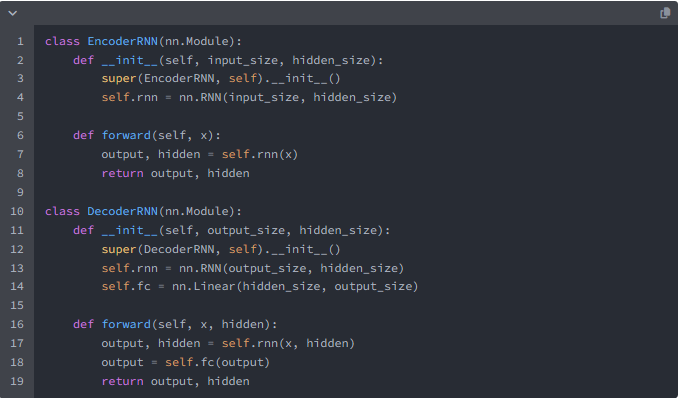
3. Text Generation
RNN can be used to generate new content based on an initial piece of text, with the model generating text step by step until a condition is met or it stops. For example, given the initial text “Once upon a time,” the model may generate a complete story.
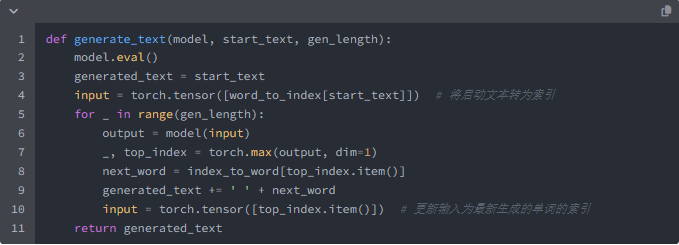
Time Series Prediction
In addition to natural language processing,RNN is also widely used in time series prediction. This model utilizes past information to predict future values, making it very suitable for applications such as financial data and meteorological data.
1. Stock Price Prediction
UsingRNN to model historical stock prices and then predict future price trends. For example, consider usingLSTM (Long Short-Term Memory network, a special type ofRNN) to improve the performance of traditionalRNN in long sequence learning. This is especially important for capturing long-term dependencies in time series.
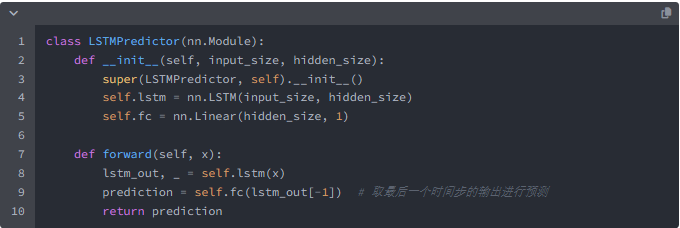
2. Load Forecasting
In the energy sector,RNN can be used to predict trends of rising or falling power loads to effectively manage power supply and reduce energy waste. By analyzing past electricity usage data, the model can identify patterns of load changes during specific times.
Audio Processing
RNN is also commonly applied in audio signal processing and speech recognition. It effectively handles the temporal information and related features of sound wave signals.
1. Speech Recognition
In speech recognition tasks,RNN is used to convert audio waveforms into text sequences. By training theRNN, the model can establish a connection between audio features and corresponding text labels.
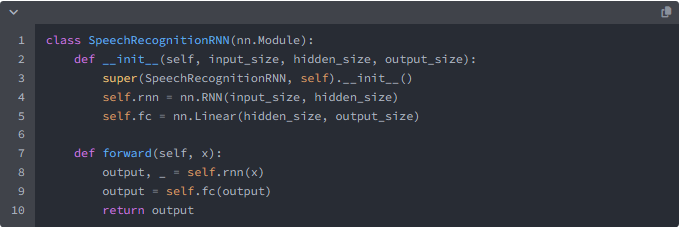
In this article, we explored the practical applications ofRNN in various fields, including natural language processing, time series prediction, and audio processing. By understanding howRNN can handle sequential data, we can better utilize this model to solve practical problems. In the next article, we will delve deeper into the architecture ofTransformer and explore its significance and applications in modern neural networks.
If you are interested, you can like, watch, share, or comment. After this series of lectures is completed, we will also teach you how to use AI to improve our work efficiency and how to use AI to earn your first bucket of gold, stay tuned! Follow Hui Kuo Technology to learn more about technology knowledge and move towards the forefront of technology!

WeChat ID
HuiKuoKeJi
